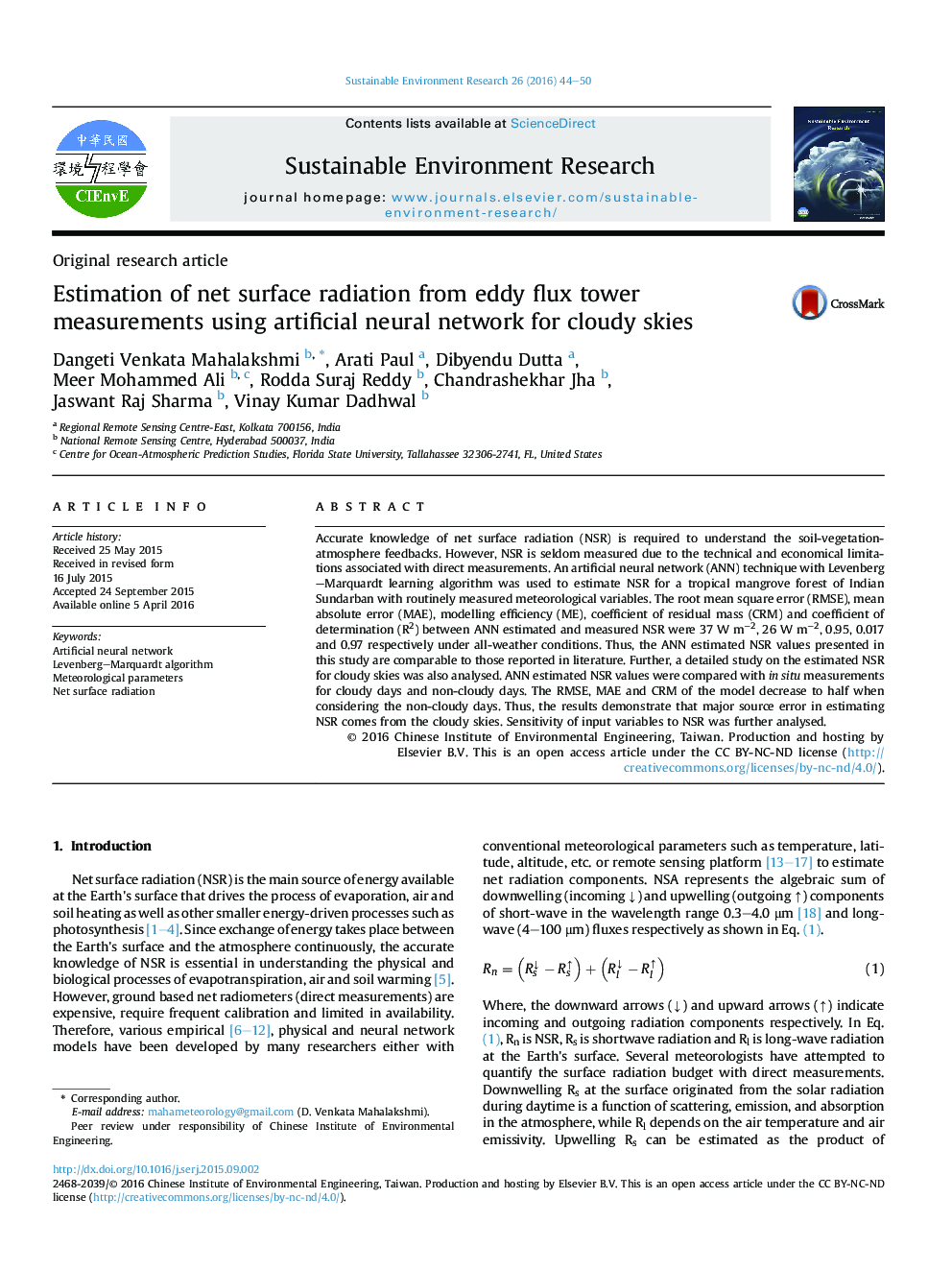| Article ID | Journal | Published Year | Pages | File Type |
|---|---|---|---|---|
| 4435404 | Sustainable Environment Research | 2016 | 7 Pages |
Accurate knowledge of net surface radiation (NSR) is required to understand the soil-vegetation-atmosphere feedbacks. However, NSR is seldom measured due to the technical and economical limitations associated with direct measurements. An artificial neural network (ANN) technique with Levenberg–Marquardt learning algorithm was used to estimate NSR for a tropical mangrove forest of Indian Sundarban with routinely measured meteorological variables. The root mean square error (RMSE), mean absolute error (MAE), modelling efficiency (ME), coefficient of residual mass (CRM) and coefficient of determination (R2) between ANN estimated and measured NSR were 37 W m−2, 26 W m−2, 0.95, 0.017 and 0.97 respectively under all-weather conditions. Thus, the ANN estimated NSR values presented in this study are comparable to those reported in literature. Further, a detailed study on the estimated NSR for cloudy skies was also analysed. ANN estimated NSR values were compared with in situ measurements for cloudy days and non-cloudy days. The RMSE, MAE and CRM of the model decrease to half when considering the non-cloudy days. Thus, the results demonstrate that major source error in estimating NSR comes from the cloudy skies. Sensitivity of input variables to NSR was further analysed.
